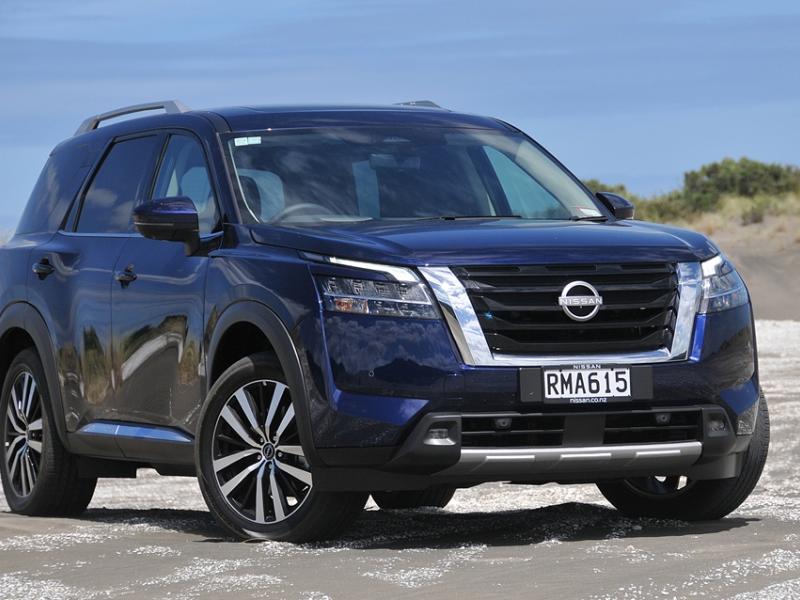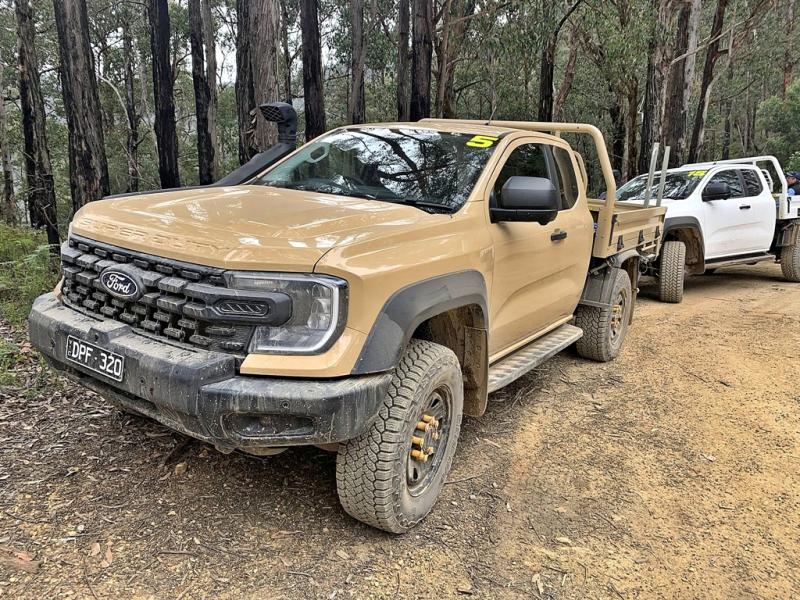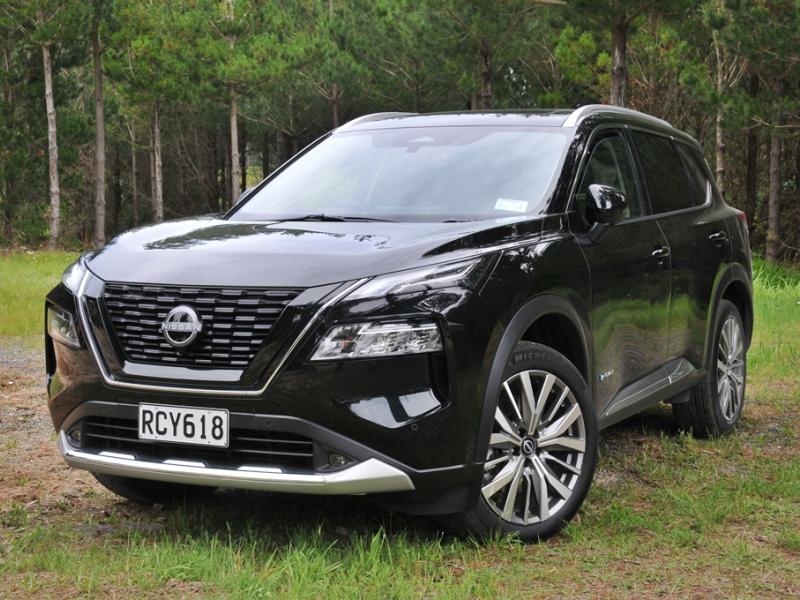Jeep's new Compass - unlimited.
This is good. Jeep’s all-new Compass not only looks the business, it does the business.
Though unashamedly urban-oriented, the Compass fulfills the needs of a wide range of prospective buyers with lashings of tech and safety and a multi-mode transmission that includes a lock function and electronically-activated ‘low range’.
Competition in the wider SUV sector is as stiff as ever though, and with the Compass wading into premium territory buyers can easily compare the fresh offering with existing rivals.
To be clear, while the ‘industry’ may class the Compass as a small SUV, the Compass is definitely ‘small to medium’ with a heavy emphasis on the medium. Family-sized and mission-capable.
The road presence of this SUV is emphatically 2022, future-compatible into the rest of the decade. Specifically, since we drove the new Grand Cherokee L a couple of months ago, this compact-mid sized offering really does come across as a ‘baby Grand’ – though it wasn’t us that coined that description.
It helps that the Grand and this Compass were both presented in brilliant white of course, and that they both have some serious alloy wheels under them.
But how cool is the Compass, how packed with tech and luxury, how sure-footed on rain-slicked tarseal?
Three instant ‘wins’ for this new SUV: excellent ride quality around town; the luxe interior (leather, leather everywhere; clever mix of soft and hard-surface plastics) and the intuitive feel of the nine-speed transmission in action.
We might not go bush-bashing with the Compass since it rolls on low-profile tyres but its 2.4-litre engine does give a strong sense of all-terrain capability.
The nine speed ‘proper’ (torque converter) transmission plays a big part in this. While the Compass is car-based, it’s able to do some forest-style four-wheel driving thanks to smart powertrain controls: ‘4WD Low’ is not an actual transfer-case low range, but rather locks the Compass into first gear. Selecting ‘4WD Lock’ (separate button) engages four-wheel drive
permanently (instead of on demand), and a handful of driving modes will control traction better in low-grip situations.
Just leaving the drivetrain in ‘4WD auto’ gives the Compass some ‘feel’ but not ultimate grip. It’s possible to scrabble the front wheels at gravel intersections and set the traction control light a-flashing. For sandy or slimy going – or snow – there’s a separate dash button to send the T/C mode to sleep.
The Grand/baby Grand comparison ends under the hood. The Grand Cherokee is of course a V6, while the baby Grand has a 2.4-litre four cylinder making 129kW available at 6400rpm and 229Nm of torque at 3,900rpm. Fuel economy is a claimed 9.7l/100km. We saw 10.0l/100km in mixed urban and motorway running without trying so the manufacturer’s claim is entirely credible.
Inside we have seating for five and a modern and sophisticated look. The dashboard is dominated by a new, larger infotainment display, intersected by chrome horizontal lines and cleanly integrated air vents. Where once they looked like an iPad attached to the dash by velcro, these days infotainment displays are becoming more and more smoothly integrated into the dash design. Jeep is one of the brands leading the way.
As already mentioned, the inside of the Compass is a place of contrasts. The front seats are very much in the vein of a sports-influenced captain’s chair and are both heating and cooling enabled.
There’s a huge choice of storage areas, and for those who obsess about such things, the second-row seats have cup holders in the centre armrest. Those seats don’t tilt or slide, but for those under 6’4” legroom and headroom is good. The seats have a 40/20/40 split, allowing the middle seat to pop down like an armrest with built-in cup holders. This ‘port’ would also be handy for carrying a mixed payload of passengers and long items like skis or (heaven forbid) a length or two of timber.
The front seat centre console cupholders, like the rear, are the perfect fit for Jeep’s own keep cups. NZ4WD did test this essential feature of the Compass and report that it is very fine indeed. The centre console runs two rails from the dash base to the front seats and an ergonomically excellent armrest leaves the driver’s left arm perfectly placed to select drive modes and ratios.
Underneath the dash-located air conditioning controls (which are separate to the infotainment, always a good thing) sits a large storage compartment with a wireless charging pad, which is big enough to fit a modern (read: big) smartphone, and is quite handy for daily usage. For drivers who have yet to use such features, please note that the phone needs to be newer than an iPhone 5, 5SE or early 6. In our case that means it gets a big thumbs up from daughter, whose phone is of course bigger, more clever and newer than dad’s.
There are USB and USB-C charging points. Unusually, there is no 12-volt outlet up-front - that is in the second row with a 220V plug below the air vents and more USB and USB-C points.
The infotainment display is large and bright, standing proud of the dashboard with a slightly oblique shape. This is a big step up over the previous offering, in terms of both size (10.1-inch vs 8.4-inch) and the operating system. This is a new Uconnect 5 system, and proved to be easy to use and trawl through during our test.
A couple of navigation bars, on top and bottom of the display even when smartphone mirroring, help with functionality.
There are small, secret buttons on the back of the steering wheel as well. Easy to miss them completely, but they are used to control tracks, radio stations and volume.
The operating system is fast to react and process, and ticks the boxes of Apple CarPlay and Android Auto (both wireless), as well as navigation and radio.
The main 10.25-inch dashboard is fully digital and loaded with scrollable ‘pages’ of info.
More importantly it is fully customisable. The driver can set up the dash with a range of data including oil temperature, transmission temperature and battery voltage.
Dynamically, the electrically-assisted steering is weighted on the light side of things overall, allowing easy lock-to-lock spinning for parking and u-turns. It remains composed around town and has decent ‘feel’ at highway speeds.
Safety-wise there is the kind of package buyers of a $60,000 SUV would expect. The hand of God is with us again here, Lane Keeping Assist holding us away from the steel/concrete lane dividers on the Auckland motorway at Takanini. The steering system will tug at the wheel slightly as the LKA goes about its business, subtle and not overly annoying as the older versions of this tech were. Jeep, once more, takes a step ahead of the pack.







